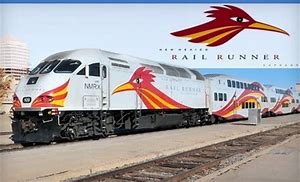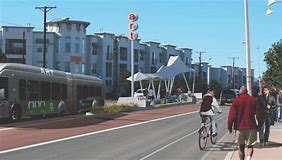Public transportation is controversial in my adopted home state of New Mexico. The Rail Runner, a commuter train line from Belen to Santa Fe, is hemorrhaging money and losing ridership. In Albuquerque a new bus rapid-transit system is more than a year behind schedule and counting.
 I’m following the controversy because I grew up on public transportation in Chicago. I spent most of my life commuting by suburban train, elevated and bus because it was the most convenient way to get around. Riding the train to work downtown was faster than driving and way cheaper than parking. In college I spent more than two hours a day on the subway getting to and from the campus. I effectively majored in transportation because I spent nearly as much time commuting as I did in journalism class.
I’m following the controversy because I grew up on public transportation in Chicago. I spent most of my life commuting by suburban train, elevated and bus because it was the most convenient way to get around. Riding the train to work downtown was faster than driving and way cheaper than parking. In college I spent more than two hours a day on the subway getting to and from the campus. I effectively majored in transportation because I spent nearly as much time commuting as I did in journalism class.
Public transportation thrives on population density. In cities like Chicago and New York thousands of people live within walking distance of every subway station, every major street can support a bus line, and riding to work beats fighting traffic.
Bus service struggles in less-dense suburbs and smaller cities because meandering routes and complex schedules are necessary to ensure access. Taking the bus usually is slower and less convenient than driving, which makes public transportation a last resort rather than a competitive option.
New Mexico is automobile country because the state is blessed with endless miles of nowhere and many residents live in the middle of it. Albuquerque occupies nearly as many square miles as Chicago with one-fifth the population, and the buses run mostly empty most of the time. I never ride the bus in Albuquerque because the nearest bus stop is a mile away. And I have a car.
So our public transportation is driven more by political hubris than passenger demand. The Rail Runner commuter train opened to great fanfare in 2006, ostensibly to avoid future traffic congestion. When service began, the trip from Albuquerque to Santa Fe took about the same time as driving.
But the train ride got longer as more stops were added, and the anticipated traffic congestion failed to materialize as the state’s population remained flat. Riding the train now takes twice as long as driving, even during rush hour. Ridership is declining steadily while the state pays off the Rail Runner’s massive debt.
 In Albuquerque, the last mayor pushed through an elaborate bus rapid-transit system along the city’s main drag: dedicated bus lanes, platforms in the middle of the street and electric buses. The street already is served by two other bus routes, but the new transit system promised to stimulate development and attract millennials.
In Albuquerque, the last mayor pushed through an elaborate bus rapid-transit system along the city’s main drag: dedicated bus lanes, platforms in the middle of the street and electric buses. The street already is served by two other bus routes, but the new transit system promised to stimulate development and attract millennials.
Businesses complained and some closed while the street was torn up for a year. Then the newly completed platforms had to be modified to fit the electric buses. When the buses finally arrived, they were so defective that the city sent them back to the manufacturer. As the convoy of electric buses left town one of them broke down a few miles outside the city and had to be recharged.
The project now is more than a year late and the new diesel buses won’t arrive for another year or so. Many of the millennials the bus system was designed to attract are leaving town because it turns out jobs are a bigger draw than fancy buses. Meanwhile, the new bus lanes in the middle of the street go unused as traffic slows to a crawl. The city is contemplating — I am not making this up — temporarily using the bus lanes for street festivals and craft shows.
I usually don’t symphathize with politicians, but synchronizing a public transportation network with population growth is a tough call. In Albuquerque, few politicians have personal experience with public transportation but are under pressure to build things. So they listen to city planners who instinctively dislike automobiles and developers who crave city subsidies.
But public transportation and subsidized development don’t create population density unless there are other reasons for people to live and work there. And are nearly-empty buses the best way to serve the small minority of residents who do not have access to cars?
Despite the bus rapid-transit fiasco, Albuquerque is getting off easy. The previous mayor was pushing for trolley cars.
